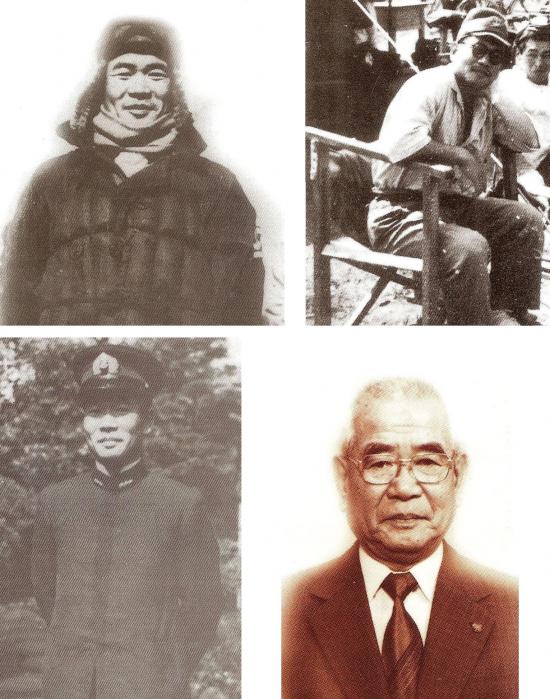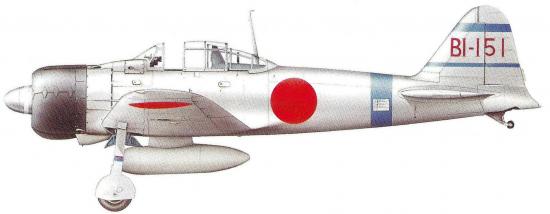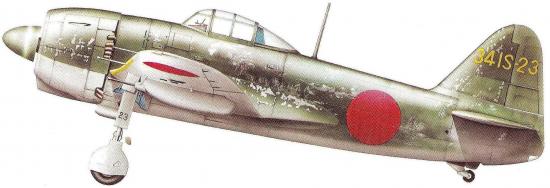Iyozoh Fujita
L'histoire - The story
Né le 2 Novembre 1917, dans la province de Shantung en Chine.
Entre à l'Ecole Navale d'Etajima en Septembre 1938. Admis à suivre le cours de pilotage n°33 de Novembre 1939 à Juin 1940. Il pilotera un biplan Type 93 puis un Mitsubishi A5M (Claude). Il est affecté au "Soryu" en Septembre 1941. Le 7 décembre 1941, il participe à l'attaque de Pearl Harbor avec la 2° vague ; il pilote une Zéro et commande un Shotai (section de 3 ou 4 avions). Il aura sa première victoire à Pearl harbor (Curtiss P-36 du S/Lt Sterling).
Lors de la bataille de Midway, Fujita homologuera 10 victoires en un jour (4 juin 1942): 3 B-26 Marauders, 4 Douglas TBD-1 Devastator et 3 Grumman Wildcat (en réalité un des quatre B-26 pourra rejoindre sa base endommagé).
Le "Soryu" étant coulé, il est affecté au "Hiyo". Il participe à la bataille de Guadalcanal et Rabaul. Puis il est affecté au 301 Kokutai pour percevoir les premiers Mitsubishi Raiden (Novembre 1943). En juin 1944, le 601 Hikotai du 301 Kokutai (celui de Fujita) repasse sur Mistsubishi A6M5 et participe à la bataille d'Iwo Jima.10 juillet 1942 : Fujita retourne à Tateyama (en métropole) et commande le tout nouveau 402 Hikotai sur Kawanishi NIKI-J Shiden (George). En octobre, il se retrouve dans les Philippines. En décembre, presque ses appareils sont détruits au sol par des P-47 Thunderbolt. Mars 1945, le 402 Hikotai prend part à la bataille d'Okinawa. Fujita sera démobilisé à la fin de la guerre sur la base de Fukuchiyama.
Après la guerre, Fujita sera commandant de bord à la Japan Airlines et prendra sa retraite en 1978. Il vit actuellement à Tokyo. Son palmares exact n'est pas officiel : 11 à 42 victoires selon les sources.

Fujita en 1942 (en haut), en 1944 (en bas à gauche) et aujourd'hui (en bas à droite)
Fujita in 1942 (above), in 1944 (here above, left) and today (here above, right)
(source : AVIONS n° 106 - collection I. Fujita)
Born on November 2nd, 1917, in the province of Shantung in China.
Enters the Naval School of Etajima in September, 1938. Attends the pilot training n°33 from November, 1939 till June, 1940. He will pilot a biplane Type 93 then Mitsubishi A5M ( Claude). He is then allocated to "Soryu" in September, 1941. December 7th, 1941, he participates in Pearl Harbor's attack with the 2nd wave; he pilots a Zero and commands a Shotai (section of 3 or 4 planes). He will claim at pearl harbor his first victory (Curtiss P-36 - Lt Sterling).
During the battle of Midway, Fujita will get 10 victories in one day (June 4th, 1942): 3 B-26 Marauders, 4 Douglas TBD-1 Devastator and 3 Grumman Wildcat (really one of the four B-26 can join its base damaged).
The "Soryu" being sunk, he is allocated to the "Hiyo". He participates in the battle of Guadalcanal and Rabaul. Then he's allocated to 301 Kokutai to perceive the first Mitsubishi Raiden (in November, 1943). In June, 1944, the 601 Hikotai of 301 Kokutai (Fujita's one) goes back on Mistsubishi A6M5 and participates in the battle of Iwo Jima. 10th July, 1942: Fujita returns to Tateyama (in metropolis) and commands the new 402 Hikotai on Kawanishi NIKI-J Shiden (George). In October, he is in the Philippines. In December, almost all aircrafts are destroyed on the ground by P-47 Thunderbolt. March 1945, 402 Hikotai takes part in the battle of Okinawa. Fujita will be demobilized at the end of the war at Fukuchiyama base.
After the war, Fujita will be a captain in Japan Airlines and will retire in 1978. He lives today in Tokyo. His exact score is not official: 11 to 42 victories according to sources.
Les avions de Fujita - Fujita's aircrafts

Mitsubishi A6M2b
Porte-avions "Soryu", Midway, Juin 1942.
Aircrafts-carrier "Soryu", Midway, June 1942.
(source : magazine AVIONS n° 106)

Kawanishi NIKI-J Shiden
Commandant du 402 Hikotai, Tateyama (Japon), été 1944.
Commander 402 Hikotai, Tateyama (Japan), summer 1944.
(source : magazine AVIONS n° 106)




